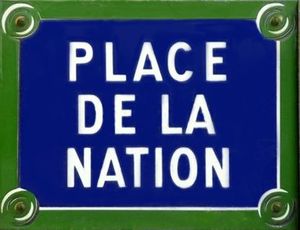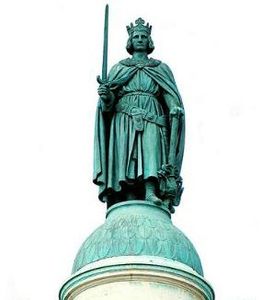Where we live... Où nous habitons... Где мы живем...
On this map, you can see the part of Paris where is situated our home. The red point is where is our home. In yellow, there are the main streets, with their french name. The small arrows indicate the direction of the car traffic for the one-way streets. Our street is called rue du Rendez-vous which means Rendez-vous Street.
Sur ce plan, vous pouvez voir le quartier de Paris où est située notre maison. Le point rouge est là où est notre maison. En jaune, ce sont les rues principales, avec leur nom en français. Les petites flèches indiquent le sens de la circulation automobile pour les rues à sens unique. Notre rue est la rue du Rendez-vous.
В этом плане, вы можете увидеть окрестности Парижа, где находится гостиница. Красная точка, где наш дом. Желтый, являются основными улицами, с их именами на французском языке. Маленькие стрелки указывают направление движения к улицам с односторонним движением.
Наша улица называется rue du Rendez-vous «улицей назначение».
Av. = avenue, проспект Bd = boulevard, бульвар Pl = square, место rue = street, yлица
cours = wide street with a place in length inside,
a
![]() metro station, станция метpo
metro station, станция метpo
Nation square, Place de la Nation, Местом Нации 
 In July, 1660, a throne had been raised on this place for the solemn entrance in Paris of king Louis XIV and Marie-Thérèse of Austria after their marriage near the border with Spain. The place was then called Throne Square.
In July, 1660, a throne had been raised on this place for the solemn entrance in Paris of king Louis XIV and Marie-Thérèse of Austria after their marriage near the border with Spain. The place was then called Throne Square.
In 1784, two columns were built. The statues of king Philippe Auguste and king Louis IX (well known as Saint-Louis) were added in 1845. Buildings situated next to every column served to charge a tax for the entrance in Paris.
In 1794, the revolutionaries got away the head to more than 1300 persons. In 1880, the square was called Nation Square.

 En juillet 1660, un trône avait été dressé sur cette place pour l'entrée solennelle dans Paris du roi Louis XIV et de Marie-Thérèse d'Autriche après leur mariage près de la frontière avec l'Espagne. La place fut alors appelée Place du Trône.
En juillet 1660, un trône avait été dressé sur cette place pour l'entrée solennelle dans Paris du roi Louis XIV et de Marie-Thérèse d'Autriche après leur mariage près de la frontière avec l'Espagne. La place fut alors appelée Place du Trône.
En 1784, deux colonnes ont été construites. Les statues du roi Philippe Auguste et du roi Louis IX (plus connu comme Saint-Louis) furent ajoutées en 1845. Les bâtiments situés à côté de chaque colonne servaient à faire payer une taxe pour l'entrée dans Paris.
En 1794, les révolutionnaires coupèrent la tête à plus de 1300 personnes. En 1880, la place fut appelée Place de la Nation.
 В июле, 1660, трон был поднят на этом месте для торжественного входа в Париж короля Людо́викXIV и Мари-Тéрèс из Австрии после их брака около границы с Испанией. Место затем называлось Местом Трона.
В июле, 1660, трон был поднят на этом месте для торжественного входа в Париж короля Людо́викXIV и Мари-Тéрèс из Австрии после их брака около границы с Испанией. Место затем называлось Местом Трона.
В 1784, две колонки были построены. Статуи короля Филиппа в августе и короля Людо́викa IX (более известный в Франции под названием Людо́вик Свято́й) были включены 1845.
Здания, расположенные рядом с каждой колонкой, обслуживаемой, чтобы заряжать налог за вход в Париж.
В 1794, революционеры удрали голова более чем 1300 людям. B 1880, место называлось Местом Нации.




/https%3A%2F%2Fstorage.canalblog.com%2F34%2F93%2F1040189%2F79570671_o.jpg)
/https%3A%2F%2Fstorage.canalblog.com%2F54%2F34%2F1040189%2F79567838_o.jpg)
/https%3A%2F%2Fstorage.canalblog.com%2F72%2F51%2F1040189%2F79358524_o.jpg)
/https%3A%2F%2Fstorage.canalblog.com%2F12%2F54%2F1040189%2F79174566.jpeg)